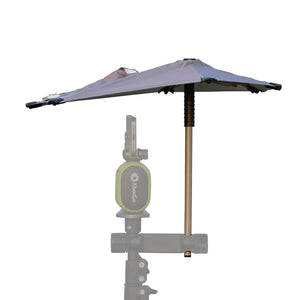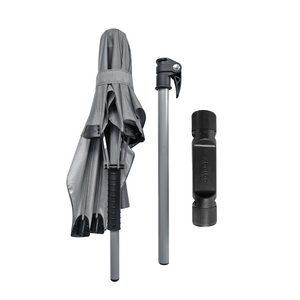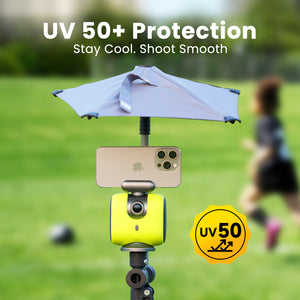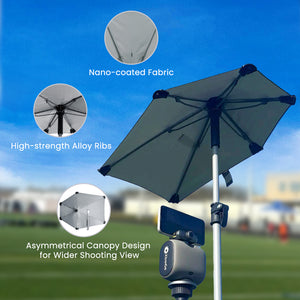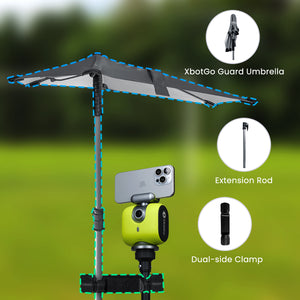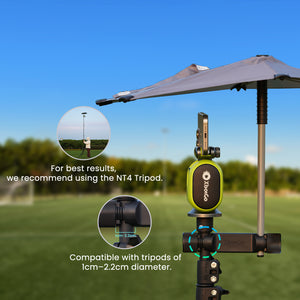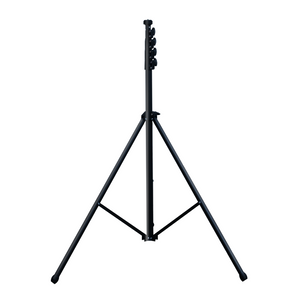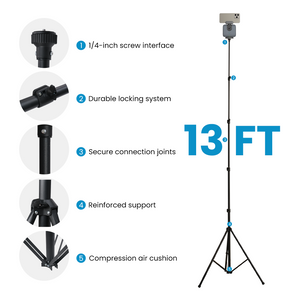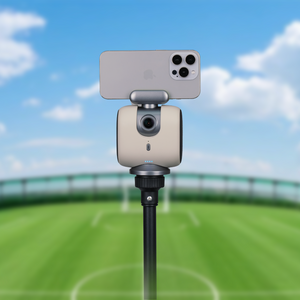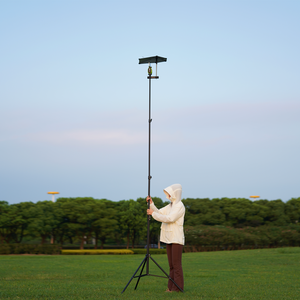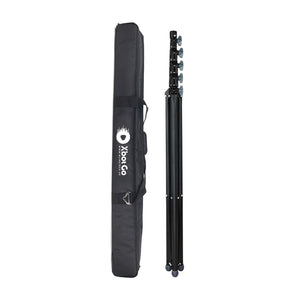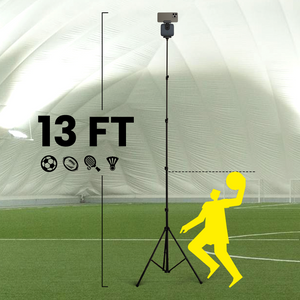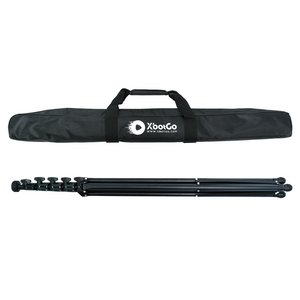XbotGo Chameleon AI Sports Camera
Hockey Positions: Everything You Need To Know
You're standing at the rink for your first hockey game, heart racing with excitement, but suddenly confusion sets in. Where exactly should you be? What's your role supposed to be? If you've ever felt lost trying to understand hockey positions, you're not alone.
In this comprehensive guide, we'll break down every hockey position in clear, practical terms. You'll discover not just what each position does, but how to actually learn and improve at playing them. We'll address the real challenges beginners face and provide proven methods that work at every skill level.
Understanding Hockey's 6-Player System
Hockey teams put six players on the ice at once, creating a dynamic system where everyone has a specific role while maintaining the flexibility to adapt. This six-player structure includes three forwards, two defensemen, and one goaltender.
The beauty of hockey lies in how these positions work together. Unlike some sports with rigid positional boundaries, hockey positions flow and adapt based on game situations. As one experienced player notes, "Positions are much more fluid in 2022 than they used to be." This fluidity means players need to understand not just their primary position, but how it relates to their teammates' roles.
Think of it like a well-choreographed dance where each player knows their part but can improvise when needed. The forwards push the offensive attack, the defensemen protect the defensive zone while supporting rushes, and the goaltender serves as the last line of defense. Together, they create a complete team unit where success depends on everyone understanding and executing their responsibilities.
Forward Positions - The Offensive Engine
Center: The Playmaking Quarterback
The center position stands out as perhaps the most demanding and versatile role in hockey. Often called the "quarterback" of the team, centers control the flow of play and carry the heaviest two-way responsibilities.
Centers take most face-offs, those crucial puck drops that restart play. Winning these face-offs means gaining immediate possession – a key advantage in hockey. But their role extends far beyond the face-off circle. Centers must possess exceptional passing skills, as they're responsible for setting up scoring opportunities for their wingers. They need what coaches call "hockey IQ" – the ability to read plays before they develop and position themselves accordingly.
Connor McDavid exemplifies the modern center's role. His combination of speed, vision, and two-way commitment shows why centers need elite stamina. They're constantly in motion, supporting defensive plays one moment and leading offensive rushes the next. As one player describes it: "You're going to play on the puck. When you don't have the puck, you're going to be on it trying to get it back."
In the defensive zone, centers have the largest coverage area, protecting what players call "the house" – the critical area in front of their net. They must track back quickly during opponent attacks, then transition instantly to offense when their team gains possession.
Wingers: The Goal-Scoring Specialists
Left and right wingers bring speed and finishing ability to the forward line. These positions often attract the quickest skaters who combine offensive firepower with strategic positioning along their respective sides of the ice.
The primary mission for wingers? Score goals and create scoring chances. They work the boards in the offensive zone, battle for pucks in the corners, and position themselves for one-timers and deflections. Nikita Kucherov and David Pastrnak represent the elite winger prototype – deadly shooters who can also create plays for teammates.
But modern wingers do more than just score. They carry significant defensive responsibilities, particularly covering the opposing team's defensemen. When the puck enters their defensive zone, wingers must resist the urge to chase it low, instead maintaining their position to prevent point shots and long passes.
One of the most common mistakes beginners make as wingers involves breakout positioning. Many new players find themselves "skating around near the blue line when we get the puck, not really having any momentum." The solution? Learn to swing back into your zone to build speed before receiving breakout passes, rather than standing stationary at the blue line.
For beginners, winger positions offer an ideal starting point. They provide a balance of offensive excitement and manageable defensive duties. As multiple experienced players confirm: "Winger is by far easiest and most forgiving" for those learning the game.
Defensive Positions - The Blue Line Guardians
Left and Right Defensemen: The Defensive Backbone
Defensemen serve as the backbone of team defense while contributing crucial offensive support. These players must master perhaps the most challenging skating skill in hockey – moving backwards at high speed while maintaining gap control with attacking forwards.
The primary responsibility seems straightforward: prevent goals. But executing this requires a complex skill set. Defensemen must read developing plays, communicate constantly with their defensive partner, and make split-second decisions about when to challenge attackers versus protecting passing lanes.
In their own zone, defensemen work in coordinated pairs. While one battles for the puck in the corner, the other protects the net front. This requires what one player calls being "a well-rehearsed couple" – knowing your partner's tendencies and adjusting accordingly.
But modern defensemen do much more than defend. Players like Cale Makar and Quinn Hughes showcase the offensive defenseman evolution. They jump into rushes, quarterback power plays from the point, and sometimes lead their teams in scoring. The key is knowing when to activate offensively without leaving defensive gaps.
The "first pass" represents a critical defenseman skill. After gaining possession in their zone, defensemen must quickly identify the best outlet option – usually a winger along the boards or a center swinging through the middle. This transition pass often determines whether a team generates offense or gets trapped in their own end.
Physical play remains central to the position. Defensemen deliver hits, block shots, and clear the crease area. They need mental toughness to absorb punishment while maintaining composure. As one veteran explains: "You need to be good in Set Pieces. Both attacking and defending."
Goaltender - The Last Line of Defense
The goaltender position stands alone as hockey's most specialized and arguably most challenging role. While every other player shares similar skating and stick-handling fundamentals, goalies operate in their own unique world of equipment, techniques, and mental demands.
"Keep the puck out of the net" sounds simple, but executing this against 100-mph shots requires extraordinary athleticism and mental fortitude. Goalies face dozens of shots per game, each one a potential goal that could shift momentum. They must track puck movement through traffic, anticipate deflections, and react instantly to shots from any angle.
Modern goaltending has evolved significantly. The butterfly style dominates today's game, with goalies dropping to their knees to cover the lower portion of the net while using their gloves and blockers up high. But beyond technique, the position demands unique mental strength. As one player notes: "You can lose with a great goaltender, but you cannot win with a terrible one."
The physical demands are extreme. Goalies wear 40-50 pounds of equipment and must execute explosive movements repeatedly. The conditioning drill called "up-downs" – dropping into butterfly position and recovering rapidly – exemplifies the position's grueling nature. Goalies perform these movements dozens of times per game while maintaining focus and positioning.
Communication represents another crucial goalie skill. From their unique vantage point, goalies see developing plays and must direct teammates. They bang their sticks to signal penalty expirations, call out opposing player positions, and help organize defensive coverage.
Perhaps most importantly, goalies must possess short memories. After allowing a goal, they cannot dwell on it – the next shot is already coming. Players like Andrei Vasilevsky exemplify this mental resilience, maintaining composure regardless of the score or situation.
Conclusion
Understanding hockey positions transforms confusing chaos into strategic beauty. Each position contributes unique skills and responsibilities, yet they all interconnect to create successful team play. Centers orchestrate offense while defending responsibly. Wingers provide speed and scoring while maintaining defensive awareness. Defensemen protect their zone while contributing offensively. Goalies serve as the last line of defense while directing team positioning.
The ice awaits – pick your position and start your journey. After all, the best way to learn hockey positioning is to get out there and play. See you on the ice!
XbotGo Chameleon AI Sports Camera
Capture every moment with AI-powered tracking. Perfect for coaches, parents, and athletes who want seamless footage without manual filming.







 Soccer
Soccer Basketball
Basketball Ice Hockey
Ice Hockey Rugby
Rugby










